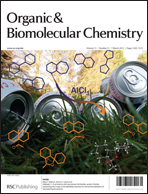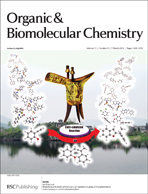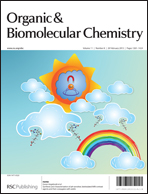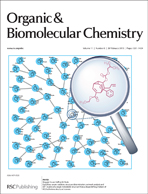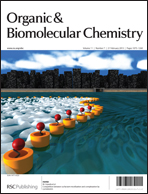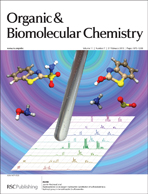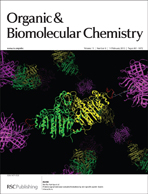
The Editorial team are very pleased to announce that Professor Margaret Brimble is now an Associate Editor for Organic & Biomolecular Chemistry.
Margaret Brimble holds the Chair of Organic and Medicinal Chemistry at the University of Auckland, is Past-President of the International Society for Heterocyclic Chemistry, Chair of the Physical Sciences Panel of the NZ Marsden Fund and a Principal Investigator in the Maurice Wilkins Centre for Molecular Biodiscovery.
Originally from Auckland, Margaret received a BSc and MSc (Hons) in Chemistry from the University of Auckland and a PhD in organic chemistry at the University of Southampton. In 2004, she won the Novartis Chemistry Award and the James Cook Research Fellowship from the Royal Society of New Zealand and in 2005, she was appointed a Member of the New Zealand Order of Merit (Queen’s Honour) for her service to science. She is a Fellow of the Royal Society of New Zealand, a Fellow of the Royal Society of Chemistry, a Fellow of the Royal Australian Chemical Institute and a Fellow of the New Zealand Institute of Chemistry.
We took this opportunity to ask Margaret a few questions:
• What inspired you to become a chemist?
The creativity associated with making new molecules for the first time.
• What exciting projects are you working on at the moment?
The synthesis of some really interesting antimicrobial glycopeptides and the synthesis of complex natural products with anticancer activity.
• You have won a number of awards since the start of your career, including the Rutherford Medal of the Royal Society of New Zealand last year. What is the key to your success?
To do total synthesis of natural products you have to be persistent and work hard. You have to accept that 90% of what you do will not work. I believe that nothing worth doing comes easily. I am therefore motivated by the “bigger picture” and have long term goals having faith that down the track the quality of our science will be recognized. The Rutherford Medal from The Royal Society of New Zealand is awarded for long term contributions to science and technology in New Zealand so this success resulted from many years of hard work with my research team.
• What scientific discovery would you most like to have been responsible for?
We have a drug candidate NNZ2566 that is in phase 2b clinical trial for traumatic brain injury. We provided the medicinal chemistry expertise for Neuren Pharmaceuticals to develop this synthetic drug candidate. I really hope NNZ2566 makes it to the market.
• You have recently become an Associate Editor for Organic & Biomolecular Chemistry. What are you looking forward to most about your new role?
I am looking forward to interacting with the synthetic community more and learning more about the chemistry people are doing. The world of synthesis is vast and it is hard to keep up with what everyone is doing.
• What advice would you give to the students who will be the next generation of scientists?
I tell my young students to do the science you like doing. I also tell them to stick to their science and not get distracted.
• What would you be if you weren’t a scientist?
I have thought about this often but actually still can’t think about anything better than being a synthetic organic chemist! We get to interact with lots of other scientists and have fun making new molecules for a range of different exciting applications – mainly for drug discovery and as new materials.
Margaret’s recent articles include:
The Kulinkovich hydroxycyclopropanation reaction in natural product synthesis
Org. Biomol. Chem., 2012,10, 7649-7665
Enantioselective synthesis of C-linked spiroacetal-triazoles as privileged natural product-like scaffolds
Org. Biomol. Chem., 2012,10, 5993-6002
Synthesis of glycosylated 5-hydroxylysine, an important amino acid present in collagen-like proteins such as adiponectin
Org. Biomol. Chem., 2012,10, 1137-1144
Comments Off on Introducing Organic & Biomolecular Chemistry Associate Editor Professor Margaret Brimble












